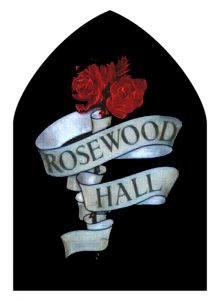Club History
Pangbourne Working Men’s Club
A digest to the history of Pangbourne Club
 At the time of writing, Pangbourne Club has been in existence for approx. 120 years. It has been in the same building, the Rosewood Hall, the big detached building just under the railway bridge in Whitchurch Road for over a hundred years.
At the time of writing, Pangbourne Club has been in existence for approx. 120 years. It has been in the same building, the Rosewood Hall, the big detached building just under the railway bridge in Whitchurch Road for over a hundred years.
The name workingmen’s club can sometimes be off-putting for newer village residents and business people working in the village. Never-the-less, the members reason, why change something that has served well for over a century. There is now a certain amount of inverted snobbery about the name and some of the club members have been so successful that they no longer need to work for a living. A large section of the members are retired people who use the club lunchtimes to drink coffee or beer, or just to read the provided newspapers and indulge in conversation.
The club owns the freehold to the premises plus over an acre of the surrounding land and the large adjoining public car park. The main club buildings are thought to be around 200 years old and are certainly documented back to the 1820s.
The handsome tree at the front of the building is a Lebanon Cedar. It is described in club minute books way back in 1900 as even then, being a substantial tree. There are a number of these in and around Pangbourne situated in the grounds of the large houses such as Basildon House and Coombe Park.
The club’s original founding premises in the early 1890s were in Salem House, rented from the then Pangbourne Gas Company, which was situated around where St James Close is now. In the year 1900 the club purchased, with the aid of a mortgage of £2,000 from the Wallingford Brewery, the building then known as Weirlea or Roselea from one Rev Hitchinson; the premises being described as “a substantial house having eleven bedrooms and in excess of one acre of land, plus coach house, outbuildings etc.”
The existing title deeds to the property comprise three pages of A3 sized longhand manuscript executed on velum with hand drawn coloured maps and diagrams defining the boundaries. They date from around 1847 when the Great Western Railway Company purchased the house and grounds to build its railway, later selling on the somewhat blighted, remaining property.
The property is believed to be haunted and successive residential stewards and their families over the years have confirmed this to be the case. The ghost is a male apparition and has been seen and felt both in the bars and the accommodation above the club. There is one known possible candidate, a steward of the club who in 1904, according to his death certificate, “placed himself in front of a train during temporary insanity.” This was indeed a very sad story, for in 1908 his brother, who had succeeded him as steward to the club, was dismissed from his post by reason of his wife’s lack of care for their small baby who died in the accommodation at the club. It was intimated, but not clearly stated, that the lady liked her drink!
Since the club’s inception, there had been appearing in the club minutes the name of a Mr Terry who was described as a scavenger. This gentleman was paid from two to seven shillings per month to carry out his duties; a scavenger being the man who emptied and maintained the buckets and the holes in the ground that served as toilets.
Following World War I, the club apparently went into decline, for in the year 1919 it could not meet the mortgage repayments to the Wallingford Brewery, who in turn foreclosed on the mortgage. For a period of three or four months (surmised) there was no Pangbourne club.
From 1897 to 1919 there appears in the club minutes the name of one Andrew Petrokinino, described variously as a committee man, trustee and gentleman/businessman who lived in the Bere Court Road area of the village. Mr Petrokinino, for the sum of £2,000, redeemed the mortgage from the Wallingford Brewery and subsequently presented the deeds of the property to the trustees of the club. Successive generations of local people thereby owe a debt of gratitude to a gentleman with a surname of Italian extraction.
Pangbourne club then went on to feature in world history at around the time of the second world war. At that period of time, many soldiers of all nations were in the Pangbourne area. The famed American Screaming Eagles Division (paratroop soldiers) had their headquarters at nearby Basildon House. Pangbourne river meadows even now, if one knows where to look, bear the partly time-healed scars of military activities. The meadows were used by Canadian, British and American engineering companies to practise river crossings for the invasion of Europe in 1944. Village gossip has it, that if cultural accents were an inherited trait, some local residents would now talk with a North American twang.
Pangbourne Club during the second world war served as a kitchen and mess hall for the aforementioned soldiers and regiments in the bleak winter months leading up to ‘D’ day, the 6th of June l944. After exercising on and in the mud, muck and muddy waters of the river Thames, these soldiers had at least somewhere warm and dry to eat their meals and recover.
The above reproduced with kind permission of former club chairman Dave Wilson. 2008.
